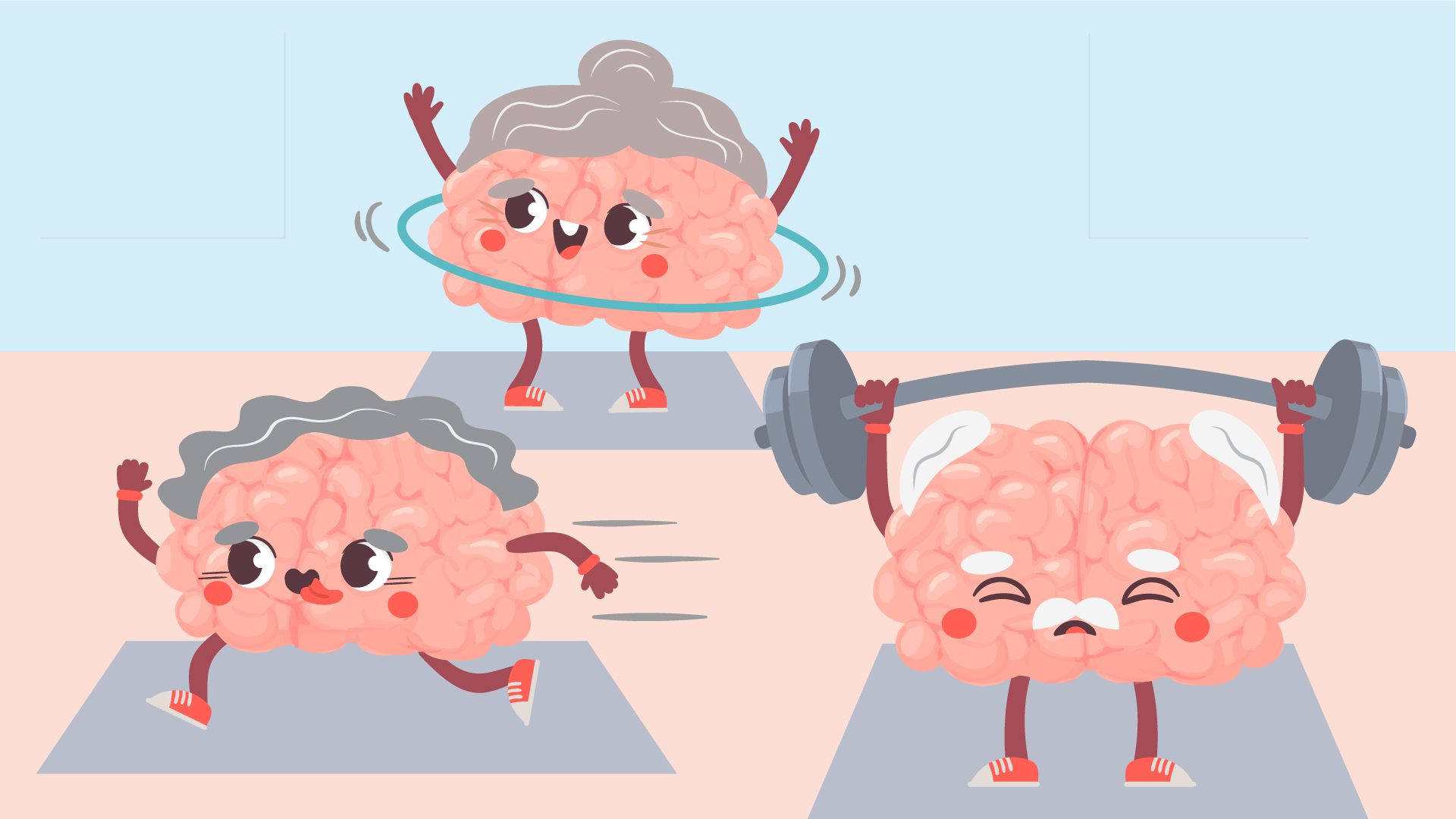- February 01, 2024
- By Maggie Haslam
At 79, Ed Vilade has a jammed social calendar. Between his choir practice (he’s in two), voice lessons, community theater and overseeing the writer’s guild at his Silver Spring, Md., retirement community, Vilade’s brain was getting a regular workout, critical, he thought, to staying sharp as he aged.
But what wasn’t in shape was his body. So, three years ago, Vilade joined a clinical trial at the University of Maryland’s Exercise for Brain Lab, which used MRI and other diagnostic tools to study how physical exertion affects the neural networks that control memory and cognition.
“Getting up in the morning was not my favorite thing to do,” he said. “But the study seemed like a good opportunity to get in shape and also advance some knowledge.”
During the 12-week trial, which required regular walking, balance and strength exercises, Vilade lost 10 pounds, felt better and began walking 8,000 steps a day with his wife. According to kinesiology Professor J. Carson Smith, he was also gaining critical protection against cognitive decline.
“What we’re finding is that exercise can strengthen, even regenerate the connections between brain networks responsible for a person’s ability to think clearly and recall memories,” said Smith, who directs the Exercise for Brain Lab. “The brain is plastic; it can change in response to being active, or in response to doing nothing.”
Smith, who watched his grandmother succumb to Alzheimer’s disease, has studied the impacts of exercise on the brain health for over 20 years. With a new, $642,000 grant from the National Institutes of Health, Smith’s team is now mining the Human Connectome Project’s high-quality brain imaging data from hundreds of subjects to help further understand the mechanisms of the brain’s response to exercise.
The current clinical trial, which will be released later this year, is examining the effects of exercise among healthy adults with and without a genetic predisposition to Alzheimer’s. Future collaborations with other UMD researchers will look at vascular function and whether single sessions of exercise could promote the formation of new blood vessels and capillaries noticeably absent in Alzheimer’s patients.
While most people know exercise is good for you, Smith hopes their findings provide the diagnostic proof that it can also be a first-line treatment.
“What we’re trying to do is demonstrate that exercise is medicine for the brain,” he said.
Below, Smith discusses what happens in the aging brain, the power of a brisk walk and why we should all be lacing up our sneakers:
What’s happening in the brain as we age?
Inflammation, which exacerbates as we age, challenges the neural systems and how they operate. Our metabolic health plays a role too; if the brain isn’t getting enough energy, cells begin to die off in areas like the hippocampus. If it isn’t working very well, not only do you have problems recalling short-term memories, you can’t transform them into long-term memory.
When you’re younger, signals within brain networks are segregated and very distinct; it’s what makes it so easy for young people to multitask. The lines begin to blur between our brain networks as we age; you start recruiting from other parts of the brain to help you do those same tasks. When that desegregation happens, that’s related to future cognitive decline.
How does exercise impact the brain’s aging process?
We’re seeing that exercise in moderate amounts helps the brain networks reestablish that signal separation, and in doing so they are better able to encode information more effectively. After just one session of exercise, as simple as a brisk ride on a stationary bike, subjects are able to learn better, but we see improvements in many different functions. People are faster and more accurate on testing, their executive functioning is improved, and they have improved memory recall.
Could your findings translate to other issues in the brain beyond Alzheimer’s?
Oh of course, we find that exercise impacts areas of the brain that regulate your mood; it’s protective against depression. A study by a former doctoral student on mood after exercise found that exercise quieted a brain network that is over-activated with depression and anxiety. So that’s an area we’re also studying; It has a lot of appeal because many people struggle with mental health.
Does exercise protect people against cognitive decline?
It’s definitely protective—I think we’re a far cry from saying it’s a cure for anything. It’s clear that when a person develops Alzheimer's disease, there's not much you can really do other than slow it down a little bit. Maybe exercise helps in some ways and certainly can be useful as an adjunct to other treatments. But it might protect people from getting Alzheimer’s for a certain amount of time.
Who should care about this?
We all should. After the age of 35, cognitive abilities start to decline. Exercise is a lifestyle behavior that works across age, sex and genetics. Yet it’s inaccurately prescribed; it’s not paid for by health plans or insurers as a treatment. But you can give a dose of exercise, and it has a real effect on these brain networks that could, over time as those doses are repeated, generate changes in the brain that would be good for you.
Topics
ResearchUnits
School of Public Health